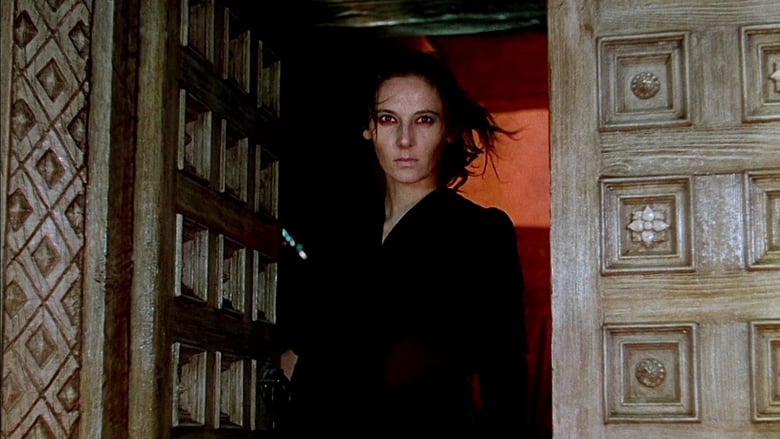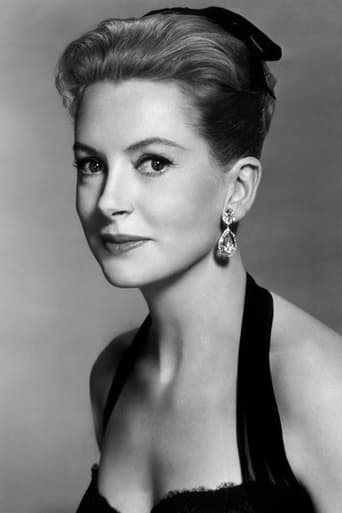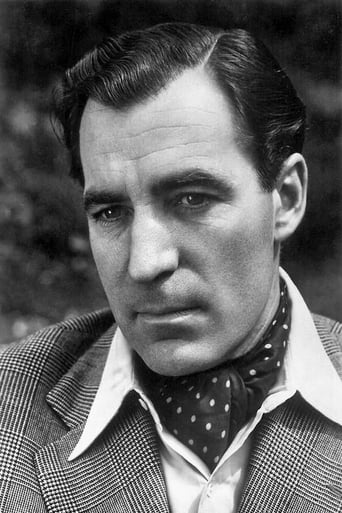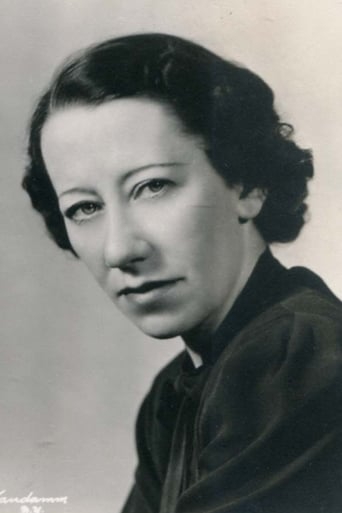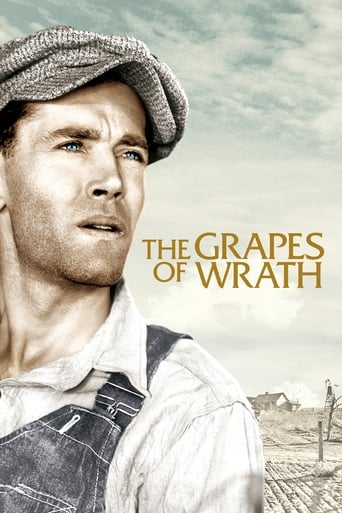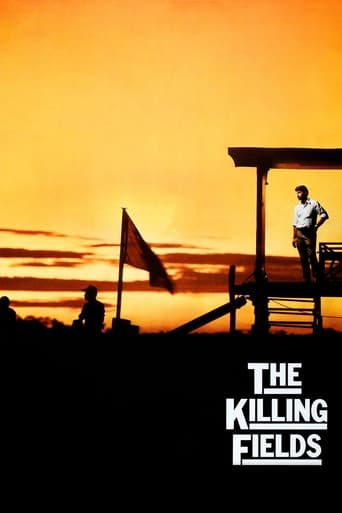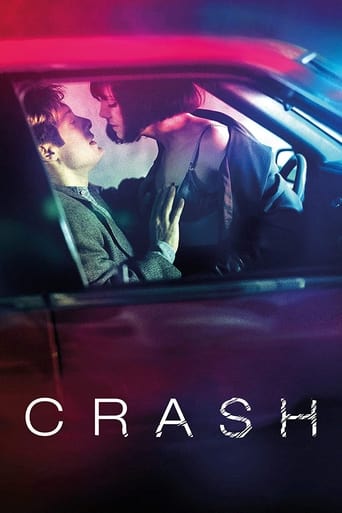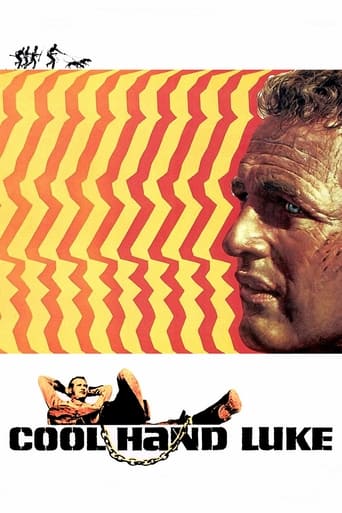Black Narcissus (1947)
A group of Anglican nuns, led by Sister Clodagh, are sent to a mountain in the Himalayas. The climate in the region is hostile and the nuns are housed in an odd old palace. They work to establish a school and a hospital, but slowly their focus shifts. Sister Ruth falls for a government worker, Mr. Dean, and begins to question her vow of celibacy. As Sister Ruth obsesses over Mr. Dean, Sister Clodagh becomes immersed in her own memories of love.
Watch Trailer
Cast
Similar titles
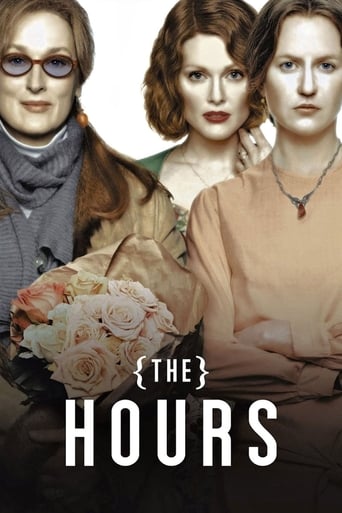

Reviews
Simply Perfect
This movie was so-so. It had it's moments, but wasn't the greatest.
This is one of the few movies I've ever seen where the whole audience broke into spontaneous, loud applause a third of the way in.
While it doesn't offer any answers, it both thrills and makes you think.
Powell and Pressburger show why they are one of the great British filmmakers.This adaptation was shot in the studios, they went nowhere near India. They did go on location for some country scenes set in Ireland.Sister Clodagh (Deborah Kerr) has been tasked to set up a school and hospital up in the Himalayan mountains. The building was a place where concubines resided and is filled with erotic images. A previous order of male priests have failed here.The nuns set about their work with the local community, the Old General pays the locals to attend the school until they get into the habit of attending. They are frequently visited by Mr Dean (David Farrar) a cynical Briton who is a contact man for the nuns and the Old General. He also is familiar with the locals and their customs.In the elevated atmosphere, repressed memories come back for Sister Clodagh, her life with her beau back home who deserted her. For the unstable Sister Ruth (Kathleen Byron) her hidden passions are unleashed as she desires Mr Dean and when he rejects her, she blames Sister Clodagh.An audience in 1947 would not had seen a film like Black Narcissus. Powell and Pressburger pushed the art of making movies forward. The painted backdrops and the colour cinematography by Jack Cardiff is sublime. The story is majestically told.The nuns are put in their place at times by Mr Dean who may be cynical but pragmatic, the general's son when he wants to learn in the school, even the local mystic where they are told to look into their faith time and again.The nuns order is met by a stir of emotions. Sister Clodagh recognises this. One of the nun's starts to grow flowers instead of vegetables but the most startling revelation is to see Sister Ruth in makeup and a dress as she gives up her vows. The erotic undercurrent of the film is startling leading to a violent confrontation.
Nuns form a nunnery in the Himalayan "roof the world" and quickly get swept up by the local traditions, cultures and people. Being more effected by them than the natives are by the newly arrived nuns.Films are made too often and too often for the wrong reasons for them to stumble in the world of profound art. But here they have created a masterpiece which despite passing of time rarely fails to enthral and amaze. The care and attention to detail are astonishing.(Shame the bell tower scene features on the poster and in the trailer - should be kept as a surprise. But any film maker - from Hitchcock down - could learn from it. If they haven't already.)The first thing this film needs and then gets is a great cast. Deborah Kerr is amazing as she has to play two roles: The nun and the nun in her former life. This isn't as easy as you would believe and provides insight and comparison. The locals are well cast too - and believable - in a way so few films of the period are. Fully fleshed with a life and agendas of their own.Emeric Pressburger is a genius. This film is all the evidence anyone would need. Like musicals it has all the ingredients not only to be a failure - but a complete joke. A colony of nuns in the middle of nowhere! What nerve the producers had! My final thoughts are the final thoughts of many favourite films. Flawed or otherwise. They are a deep experience. Not always a pleasant experience and not always an experience you wish to repeat, but a unique experience. Black Narcissus is a unique experience and there aren't that many films that stand on their own like that. See it.
Actually, watching the nuns in this film cook sausages would have increased the entertainment by a factor of 37. We needed to see some sausage cooking. Nothing happens in this film. What a boring waste of time the whole experience is. Basically, some nuns take over a derelict house high in the Himalayas in an attempt to provide teaching and medicine to the local community. Does this interesting plan work? I felt a bit disappointed in that I had bought this film on the recommendation of other reviewers. So, I'm here to redress the imbalance of those who have given nothing but praise for this snorefest. The film is filled with camp, over-acting nonsense, especially from Sister Kathleen Byron (Ruth) and caretaker May Hallatt (Angu). They put this film straight into the camp comedy genre. And what a total waste of Jean Simmons - she is coloured in brown and given no dialogue! This is one film that definitely needed some explosions, a car chase and some random nudity. You know, naughty nuns, that sort of thing. Be prepared for a very slow journey with a predictable ending. If you can't guess the ending early on, then may I suggest you go and join your local nunnery as this film has clearly been too over-stimulating. You must have been gripped. My recommendation would be to definitely watch a cookery programme over this tosh. Time for some sausages.
Its rather hard to believe this movie is produced in the 40s while the matureness and colorfulness of the cinematography is basically indistinguishable from some of the works produced in the recent decade, and the complexity and lingering influence of the story overshadows most of the contemporary commercial blasts, even the old school jazz soundtrack and elegance of stage performances add up to the spellbind capacity of the film. The most impressive scenes are definitely when Kathleen Byron quietly and composedly putting on her blood-colored lipstick, wearing a maroon low cut dress instead of virginity white nunnery uniform, the tension and detonating prowess of her performances is palpable. She is willing to abandon her religion for years to pursue secular pleasures, which is unrequited love and accompanying caustic jealous that ended up consumed her last shred of dignity and kindness and even her life. The enervation's of religion and diabolicalization of love and hatred is expressively contrasted, the courage to address the forbidden and controvertible issue in 1940 is invigorating for the contemporary generation, while the freedom and latitude is supposedly keeping widening, this kind of freshly iconoclastic question is less brought up by movies and the desensitized audience seem to be more satisfied with them. The story tells the story in a eerie context, the roof of the world surrounded by vibrant flowers and mistral blowing wind, with unsophisticated and secluded people,a living god abode in the middle of the mountain, and a rawly loved-by-all man with perfect masculinity and strange flirtatious gravitas. This all happens in a totally unfamiliar way, thus creates a sharp schism between reality.But do people living in an ordinary life ever question their religions? Or the doubt and incredulity only happens when we are not surrounded by cultured human beings and given an opportunity to be totally free and uncurdled in the nature?

